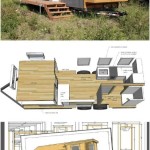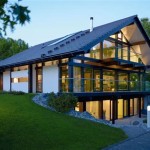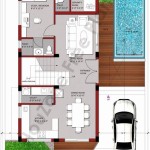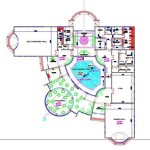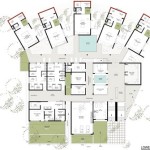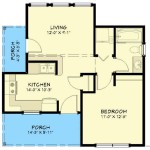Small Pigeon Loft Plans: A Guide to Designing a Compact and Efficient Space
Pigeon keeping, a practice spanning centuries, offers a unique connection to the natural world. Whether for racing, showing, or simply the enjoyment of these intelligent birds, a well-designed loft is essential for their health and well-being. For those with limited space, a small pigeon loft can be a practical and rewarding option.
Before embarking on the construction of a small pigeon loft, careful planning is crucial. The size of the loft should be determined by the number of pigeons intended for housing. Overcrowding can lead to stress, disease, and decreased performance. A general rule of thumb is to allow approximately one cubic foot of space per bird for smaller breeds and up to two cubic feet for larger breeds. This ensures adequate ventilation and allows the pigeons sufficient room to move and exercise.
The location of the small pigeon loft also requires consideration. Ideally, the loft should be positioned in a sunny, well-ventilated area, sheltered from prevailing winds and excessive rain. Orientation is important; a south-facing loft will maximize sunlight exposure, which is beneficial for the pigeons' health and breeding cycles. Furthermore, the loft should be situated away from trees or structures that could obstruct flight paths or provide perches for predators.
Several different designs are suitable for small pigeon lofts. A popular choice is the single-story loft, which is relatively simple to construct and maintain. This design typically features a single compartment for housing the pigeons, with an attached aviary for exercise and fresh air. Another option is the two-story loft, which offers a more compact footprint by utilizing vertical space. In this design, the lower level often serves as a storage area or a sheltered aviary, while the upper level houses the pigeons.
Material selection plays a vital role in the longevity and effectiveness of a small pigeon loft. Wood is a common choice due to its affordability, ease of construction, and natural insulating properties. However, wood requires regular maintenance to prevent rot and decay. Alternatively, metal or PVC materials offer increased durability and resistance to weathering, although they may be more expensive initially.
Ventilation is a critical aspect of pigeon loft design, particularly in smaller spaces. Adequate airflow helps to regulate temperature, remove excess moisture and ammonia, and prevent the buildup of harmful bacteria. Ventilation can be achieved through strategically placed vents, windows, or a combination of both. It's important to ensure that vents are covered with mesh to prevent the entry of rodents or other pests.
The interior of the small pigeon loft should be designed for ease of cleaning and maintenance. Removable perches and nesting boxes simplify the cleaning process and allow for thorough disinfection. Smooth, non-porous surfaces, such as painted wood or plastic sheeting, are preferable for walls and floors as they are easier to clean and less likely to harbor parasites.
Perches are essential furnishings within the pigeon loft. They provide resting places for the birds and should be designed to accommodate their natural perching behavior. Perches can be constructed from wood dowels or branches and should be of varying diameters to promote foot health. The number of perches should be sufficient to accommodate all birds comfortably without overcrowding.
Nesting boxes provide a secure and private space for pigeons to lay and incubate their eggs. These boxes can be constructed from wood or plastic and should be sized appropriately for the breed of pigeon. Providing ample nesting boxes reduces competition and promotes successful breeding. Clean nesting material, such as straw or wood shavings, should be provided regularly.
Security is paramount in safeguarding the pigeons from predators. Solid construction, secure doors and windows, and predator-proofing measures are essential. Wire mesh around the aviary prevents entry by larger predators, while smaller openings should be sealed to prevent access by rodents or snakes. Regularly inspecting the loft for signs of damage or potential entry points is crucial for maintaining security.
Access to fresh water is vital for the pigeons' health and hydration. Waterers should be designed to prevent contamination from droppings and should be cleaned and refilled regularly. Similarly, providing a balanced diet of high-quality pigeon feed is essential for maintaining their health and performance. Feeders should be designed to minimize waste and prevent contamination.
Regular cleaning and maintenance are essential for the health and well-being of the pigeons. Droppings should be removed frequently, and the entire loft should be thoroughly cleaned and disinfected on a regular basis. This helps to prevent the buildup of harmful bacteria and parasites and maintains a healthy environment for the birds.
Building a small pigeon loft can be a rewarding experience. By carefully considering the design, materials, and ongoing maintenance requirements, one can create a functional and comfortable space for these fascinating birds. Remember to prioritize the pigeons' well-being by ensuring adequate space, ventilation, and security. With proper planning and execution, a small pigeon loft can provide a fulfilling and enjoyable hobby for years to come.

Kate S Pigeon Loft From Plans Evansville Na The Garden Coop

Lcs Pigeon Loft Plans Digital

Small Coop Loft Plans And Designs Pigeon Design Plan

Pigeonbasics Com Articles The Loft And Its Fittings Chapter 2

Smallest Racing Pigeon Loft Google Search Design Plan

Pigeonet

Pigeonet

Small Simple Pigeon Loft Design Cage

Tiny Loft Fascinating Pigeon Racing Method Winning And Pigeons Strategies Insider

Simple Pigeon Loft Design All In One Kati Kabootar Machaan


